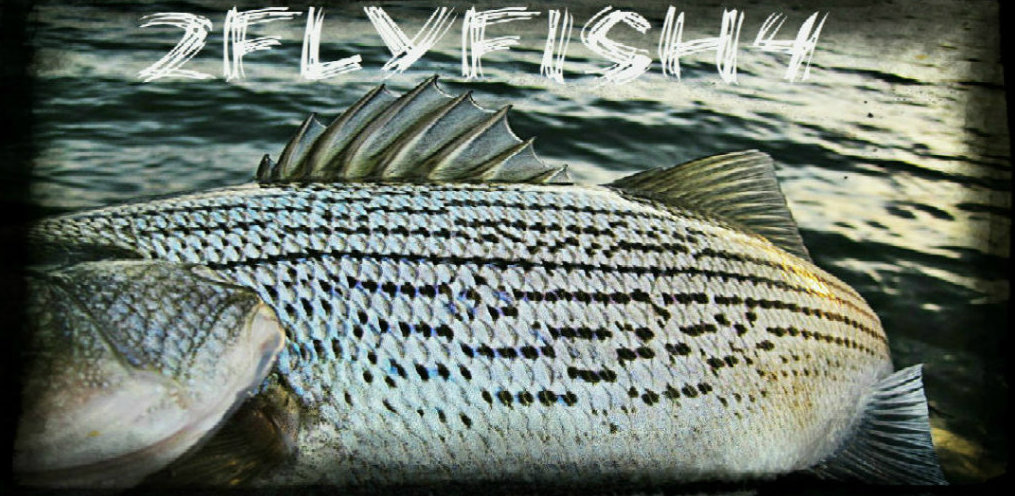I enjoy going off the Texas coast and fishing the oil rigs, wrecks and other structure laying on the bottom of the Gulf. Using 5, 6 and 700 grain sinking lines to get as deep as you possible can looking to hook up with the leviathans from the depths. Never knowing what you have on the end of your line till it nears the surface. It could be a snapper, amberjack, cobia, jack, grouper, kingfish, and so on. Some folks don't like it much, its not visual enough for them, it doesn't entice them enough, they may not have confidence in what they are doing or the casting of such heavy lines is to much work. I've always enjoyed it because you have to have a lot of faith in that what you are doing will result in catching fish. There is no way of seeing how a fish reacts to your fly or presentation. With today's high tech fish finders you might be able to pinpoint fish, but are they the targeted species, are they feeding, or is the fly just not interesting them. Are you getting deep enough to reach the fish? There are a lot of factors that play into this. What is the speed of the current, how fast is the boat drifting, how deep do you need to get to put the fly in front of the fish. To start off with a heavy grain sink tip line can only do so much. If the fly isn't weighted or is inadequately weighted to the the point it hinders and slows the sink rate of the sinking line you begin to contradict what you are trying to do. I've looked a lot at how people have weighted flies, lead eyes, wrapping lead wire around the shank of the hook, adding split shot to the leader and so fourth. To be able to get 50+ feet deep a lot of times takes more then those options. Especially if the current speed and the boats drifting speed aren't ideal for the depth the fish are at. I figured there has to be a better way. So this is the fly I came up with.
Tungsten is heavy and you can find all different sizes in
the bass fishing section of most sporting good
stores. On this fly I am using 1/2 oz but
have flies tied with up to 1oz.
Start by painting it white
with some nail polish.
I picked a bunch of these bucktail teasers up for next
to nothing a few years ago. I have been able to
find a lot of uses for them.
the bass fishing section of most sporting good
stores. On this fly I am using 1/2 oz but
have flies tied with up to 1oz.
Start by painting it white
with some nail polish.
I picked a bunch of these bucktail teasers up for next
to nothing a few years ago. I have been able to
find a lot of uses for them.
I've kinda got an addiction to adding curly tails to flies right now.
I figure its a great way to add motion to the fly, and since the fly
will be sinking for 45 to 90 seconds before I start my retrieve I
wanted something on the fly that would give it some action.
will be sinking for 45 to 90 seconds before I start my retrieve I
wanted something on the fly that would give it some action.
Next I take about 10" of 60lb wire and double it over
while putting it through the eye of the hook.
Take a bucktail teaser and slide it over the wire.
Take your tungsten weight and slide onto the wire.
Add another bucktail teaser.
I like to have rear hook with hook point down, and
the front hook with hook point up. Put both
strands of wire through the eye of the hook.
Start wrapping down securely and fold back the wire
and cut off the excess. Add some super glue
to hold the wraps tight.
These IBalz are the largest eyes I know of.
Secure them in.
Your basically tying a clouser from here on out.
There is plenty of flash on the bucktail teasers.
So I'm not going to add anymore.
Obviously this isn't going to be the best casting fly.
But when you are trying to get really deep, you
are typically just casting 30 or so feet and
then feeding line as the head and fly sink.
Roughly 6"-7" fly.
Take a bucktail teaser and slide it over the wire.
Take your tungsten weight and slide onto the wire.
Add another bucktail teaser.
I like to have rear hook with hook point down, and
the front hook with hook point up. Put both
strands of wire through the eye of the hook.
Start wrapping down securely and fold back the wire
and cut off the excess. Add some super glue
to hold the wraps tight.
These IBalz are the largest eyes I know of.
Secure them in.
Your basically tying a clouser from here on out.
There is plenty of flash on the bucktail teasers.
So I'm not going to add anymore.
Obviously this isn't going to be the best casting fly.
But when you are trying to get really deep, you
are typically just casting 30 or so feet and
then feeding line as the head and fly sink.
Roughly 6"-7" fly.









































